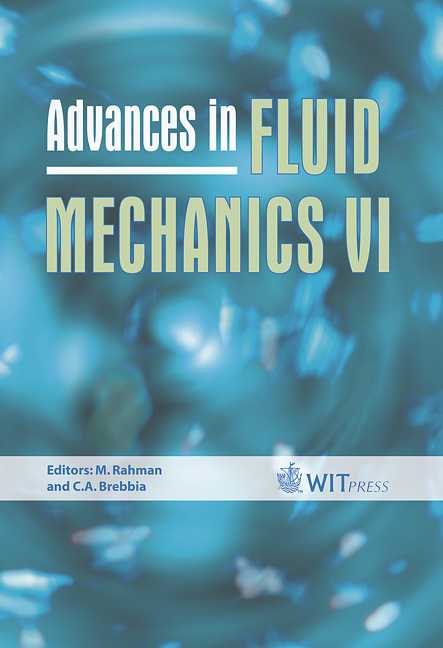Aerodynamic Flow Simulation
Price
Free (open access)
Transaction
Volume
52
Pages
9
Published
2006
Size
388 kb
Paper DOI
10.2495/AFM060071
Copyright
WIT Press
Author(s)
R. W. Derksen & J. Rimmer
Abstract
This paper reports our experience of applying a vortex cloud model to simulate the flow over airfoil sections at low-Reynolds numbers. Low-Reynolds number aerodynamics has become increasingly important of late due to interest in the development of unmanned aerial vehicles. The current state-of-the-art consists of a good base of modern experimental data, but relies on simulation methods based on high-Reynolds number experience. Vortex cloud models are numerical flow simulation methods that are based on inviscid flow tools. The method continuously injects many free vortices within the flow field and tracks their convection with time. The convective velocity is determined from the inviscid velocity component due to any bodies within the flow field, all free vortices, and a random component. The random component of the velocity field introduces a viscous effect and its value is scaled to the Reynolds number. Vortex cloud models are believed to be capable of modelling viscous flows and should be able to model separated flow without introducing special methods. We will provide an assessment of the predicted flow for a range of angles of attack for a selected set of airfoils when compared to the very good low-Reynolds number airfoil datacompiled by Selig and his co-workers. Keywords: aerodynamics, vortex cloud models, panel methods. 1 Introduction The development of aerodynamic flow simulation methods has a substantial history that demonstrates a creative intellectual effort to overcome the difficulties inherent to the governing equations of fluid mechanics. Early efforts at simulating aerodynamic flows were limited by our inability to obtain analytical solutions to the Navier-Stokes equations to all but a few idealized examples.
Keywords
aerodynamics, vortex cloud models, panel methods.





